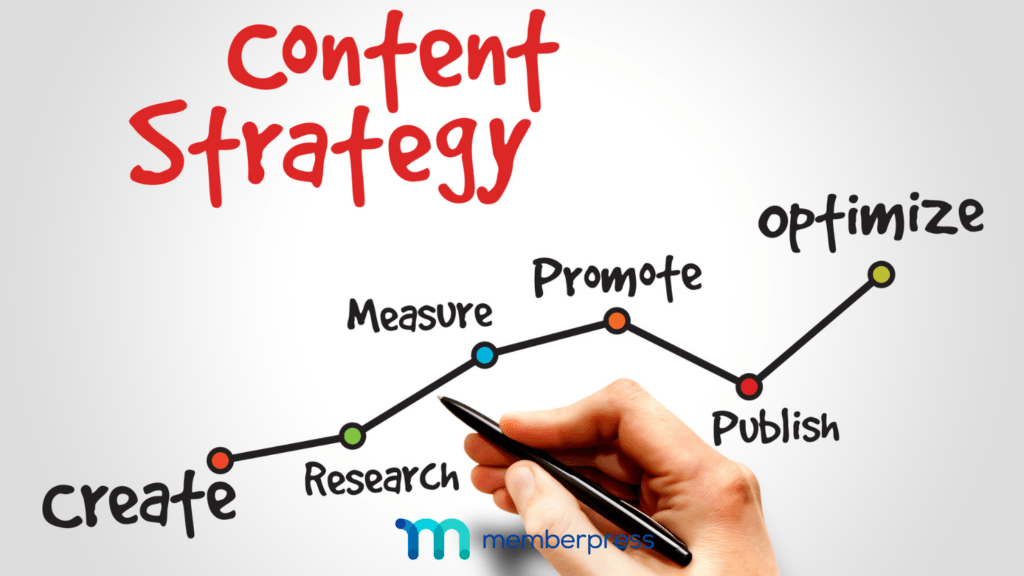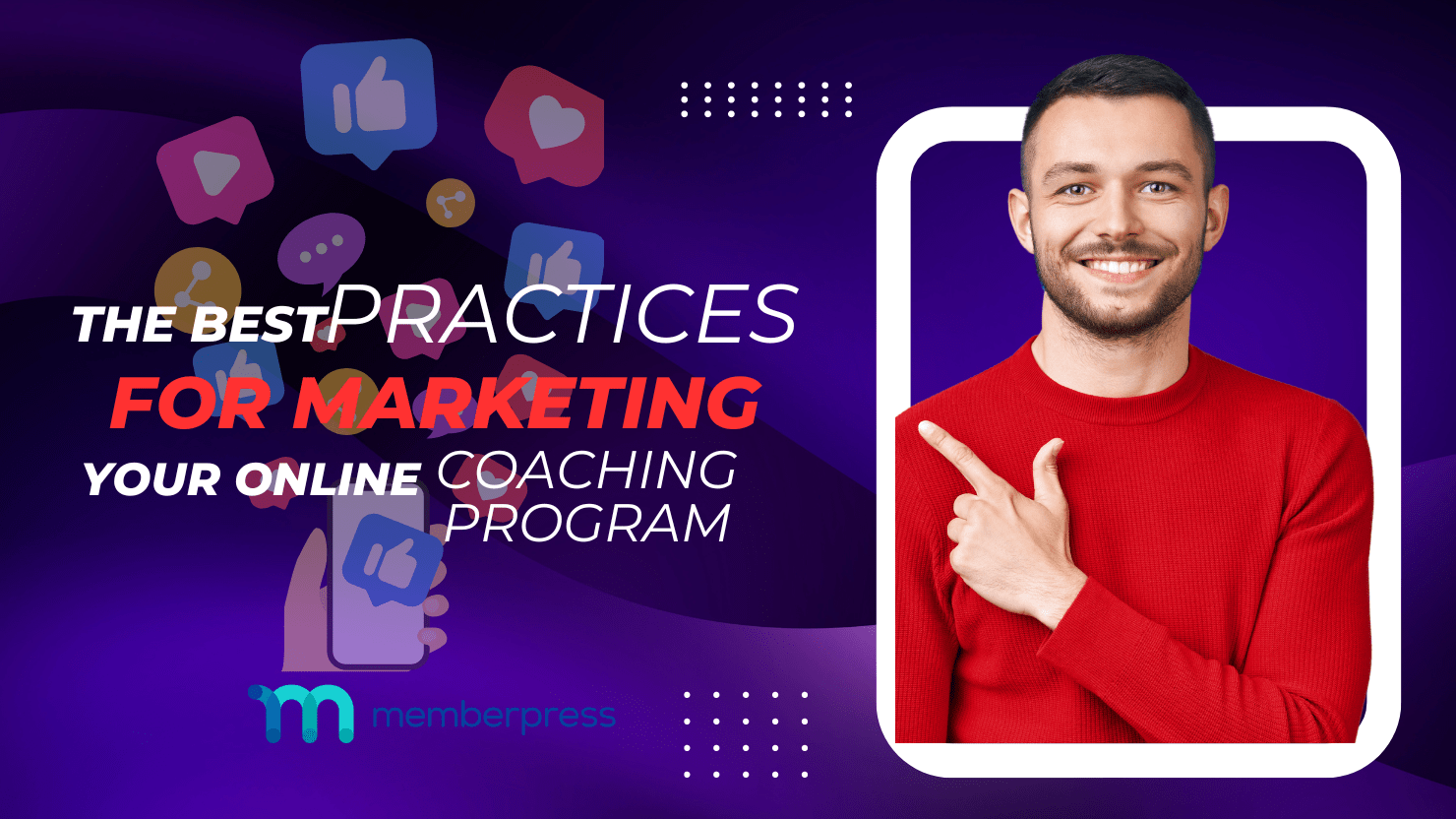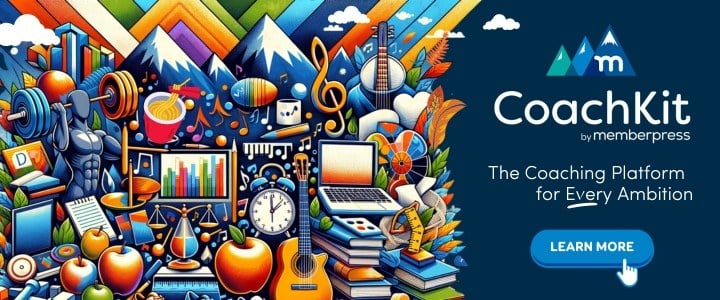Marketing your online coaching program is the key to transforming your passion into a thriving business.
Without effective marketing, even the best coaching program can struggle to gain the attention it deserves.
The good news? You don’t need to be a marketing expert to make a big impact.
In this blog post, we’re going to break down some of the most effective marketing strategies that can help you shine.
From mastering social media and crafting irresistible email campaigns to creating engaging content and tapping into online communities, we’ve got you covered.
Whether you’re just starting out or looking to take your business to the next level, these tips will help you reach the right people, build meaningful connections, and turn potential clients into loyal fans.
Section 1: Using Social Media for Marketing Your Online Coaching Program
To kick off your social media marketing efforts, it’s crucial to know where your potential clients are spending their time.
Different social media platforms attract different audiences, and understanding these nuances can help you focus your efforts where they’ll have the most impact.
Let’s break down the key platforms and see how they can benefit your coaching business:
Facebook:
- Audience: Broad and diverse, suitable for reaching a wide range of demographics.
- Features: Facebook Groups can be a powerful tool for building a community around your coaching program. Use Facebook Pages for business updates and running targeted ads.
Instagram:
- Audience: Skews younger, highly visual.
- Features: Great for sharing inspirational quotes, client success stories, and behind-the-scenes content. Instagram Stories and Reels can boost engagement.
LinkedIn:
- Audience: Professionals and business-oriented individuals.
- Features: Ideal for B2B coaching or executive coaching. Share professional insights, articles, and success stories. LinkedIn Groups can help you connect with like-minded professionals.
Twitter:
- Audience: Diverse, but with a strong presence of professionals and influencers.
- Features: Best for sharing quick tips, industry news, and engaging in conversations. Use hashtags to increase your reach.
YouTube:
- Audience: Wide-ranging, with a focus on video content consumers.
- Features: Perfect for hosting webinars, tutorials, and client testimonials. Videos can showcase your expertise and build trust with your audience.
TikTok:
- Audience: Younger, Gen Z and Millennials.
- Features: Excellent for creating short, engaging videos. Use trends and challenges to make your content relatable and fun.
By identifying the platforms where your target audience is most active, you can tailor your content and engagement strategies to resonate more effectively, maximizing your reach and impact.
You can also make use of Smash Balloon to display your social media pages on your website, making it accessible for your audience.
Utilizing Paid Advertising for Marketing Your Online Coaching Program
While organic reach is valuable, leveraging paid advertising on social media can significantly amplify your efforts, helping you reach a larger and more targeted audience. Here’s how you can make the most of social media advertising options:
- Facebook Ads:
- Features: Versatile ad formats (image, video, carousel), extensive targeting options (demographics, interests, behaviors), and the ability to create lookalike audiences.
- Benefits: Highly customizable, broad reach, and detailed analytics.
- Features: Versatile ad formats (image, video, carousel), extensive targeting options (demographics, interests, behaviors), and the ability to create lookalike audiences.
- Instagram Ads:
- Features: Integrates with Facebook Ads Manager, options for photo ads, video ads, carousel ads, and Stories ads.
- Benefits: Engages a younger audience, visually driven, and effective for brand storytelling.
- Features: Integrates with Facebook Ads Manager, options for photo ads, video ads, carousel ads, and Stories ads.
- LinkedIn Ads:
- Features: Sponsored content, message ads, dynamic ads, and text ads. Targeting options include industry, job title, company size, and more.
- Benefits: Ideal for B2B marketing, professional audience, and higher conversion rates for professional services.
- Features: Sponsored content, message ads, dynamic ads, and text ads. Targeting options include industry, job title, company size, and more.
- Twitter Ads:
- Features: Promoted tweets, promoted accounts, promoted trends, and video ads.
- Benefits: Real-time engagement, hashtag targeting, and a mix of brand awareness and direct response campaigns.
- Features: Promoted tweets, promoted accounts, promoted trends, and video ads.
- YouTube Ads:
- Features: Skippable and non-skippable video ads, bumper ads, and display ads.
- Benefits: Broad reach, effective for storytelling, and detailed viewer analytics.
- Features: Skippable and non-skippable video ads, bumper ads, and display ads.
- TikTok Ads:
- Features: In-feed ads, branded hashtag challenges, and branded effects.
- Benefits: Engages a younger, highly active audience, and creative ad formats.
- Features: In-feed ads, branded hashtag challenges, and branded effects.
Tips for Creating and Sharing Engaging Content When Marketing Your Online Coaching Program
Creating content that resonates with your audience is key to successful social media marketing. The right content grabs attention, builds trust, and encourages engagement.
- Know Your Audience
Understand their pain points, interests, and what motivates them. Tailor your content to address these aspects directly.
- Provide Value
Offer actionable tips, insights, and advice that your audience can use. Value-driven content keeps your audience coming back for more.
- Use High-Quality Visuals
Invest in good visuals. Clear, high-quality images and videos make your content more appealing and professional.
- Engage with Your Audience
Respond to comments, ask questions, and encourage discussions. Engagement builds a community around your coaching program.
- Consistency is Key
Maintain a regular posting schedule. Consistency helps build and sustain audience engagement.
By creating and sharing diverse, high-quality content, you can capture the interest of potential clients, demonstrate your expertise, and build a loyal following that is eager to engage with and benefit from your coaching services.
Section 2: Using Email for Marketing Your Online Coaching Program

Building a quality email list is the foundation of a successful email marketing campaign. A well-targeted email list allows you to directly reach potential clients who are interested in your coaching program.
Here are some strategies to grow your email list:
- Create Engaging Email Content
Produce high-quality content that attracts your target audience. Blog posts, webinars, and podcasts can drive traffic to your site where visitors can sign up for your email list.
- Use Signup Forms
Place signup forms prominently on your website. Use pop-ups, slide-ins, and embedded forms on key pages like your homepage, blog, and contact page.
- Leverage Social Media
Promote your email list on your social media channels. Offer exclusive content or incentives to your followers for signing up.
- Host Webinars and Workshops
Offer free webinars or workshops on topics relevant to your audience. Collect email addresses during the registration process.
- Offer Exclusive Content
Provide access to exclusive content, such as eBooks, guides, or templates, in exchange for email addresses. Make sure the content is valuable and relevant to your audience.
How to Craft High-Value Emails for Your Coaching Program
Creating high-value emails is essential for keeping your audience engaged and driving conversions.
Here, we’ll explore the key elements of a compelling email:
- Attention-Grabbing Headlines
Your subject line is the first thing recipients see, so make it count. It should be clear, compelling, and hint at the value inside. Use action words and create a sense of urgency or curiosity.
For example, “Unlock Your Potential: 5 Tips for Success,” “Limited Time Offer: Free Coaching Session,” “Discover the Secret to Achieving Your Goals.”
- Engaging Visuals
Visual elements can enhance the appeal of your emails. Use high-quality images, graphics, and videos to break up text and illustrate your points.
Ensure your visuals are relevant to your message and not overly distracting.
Include images of yourself coaching, client success stories, and branded graphics. Use video snippets to provide a more personal touch.
- Personalized Content
Personalization goes beyond using the recipient’s name. Tailor your content to their interests and behaviors.
Segment your email list based on demographics, past interactions, and preferences to send more relevant messages.
For example, send different content to new subscribers versus long-time clients, or offer tailored advice based on their coaching goals.
- Clear and Compelling Calls to Action (CTAs)
Every email should have a clear purpose and a strong call to action. Whether you want recipients to book a session, read a blog post, or sign up for a webinar, make your CTA stand out.
For example, “Book Your Free Consultation Now,” “Read Our Latest Success Story,” “Join Our Upcoming Webinar.”
- Professional Design
Your email design should be clean, mobile-friendly, and consistent with your brand. Use a simple layout, easy-to-read fonts, and your brand colors.
Keep paragraphs short, use bullet points for readability, and include white space to avoid overwhelming the reader.
Section 3: How to Develop a Content Strategy for Your Online Coaching Program

Content marketing is a powerful way to attract, engage, and convert your audience. Developing a robust content strategy ensures that you consistently deliver valuable content that resonates with your target audience.
Here’s how you can create an effective content strategy:
- Conduct a Content Audit
Evaluate your existing content to see what’s working and what’s not. Identify gaps in your content that you can fill with new pieces. This helps you build on your strengths and address any weaknesses.
- Brainstorm Content Topics
Generate a list of content topics that align with your audience’s interests and your business goals. Consider addressing common questions, providing how-to guides, sharing industry news, and offering expert insights.
- Choose Content Formats
Decide on the types of content you will create. Options include blog posts, videos, infographics, podcasts, eBooks, webinars, and social media posts. Varying your formats can keep your audience engaged and cater to different preferences.
- Create a Content Calendar
Plan your content schedule using a content calendar. This helps you organize your topics and formats, ensuring a steady flow of content. Include key dates, such as holidays or industry events, to align your content with relevant themes.
- Content Creation and Distribution
Develop a process for creating and distributing your content. Assign responsibilities, set deadlines, and ensure quality control. Leverage multiple channels, such as your website, social media, email newsletters, and guest blogging, to maximize reach.
By following these guide, you can create a content strategy that consistently delivers value to your audience, drives engagement, and supports your business goals.
Section 4: Leveraging Communities for Marketing Your Online Coaching Program

Joining and actively participating in online communities is a powerful way to build your reputation, connect with potential clients, and establish yourself as an authority in your field.
Here’s how to identify the right online communities and effectively engage with them.
- Forums
Look for forums that focus on coaching, personal development, or your specific coaching niche. Examples include Reddit, Quora, and niche-specific forums.
Use search engines to find forums related to your niche and join forums where your target audience is active and engaging in discussions.
- Facebook Groups
Facebook groups are vibrant communities where members share insights, ask questions, and offer support. Join groups related to coaching, entrepreneurship, and personal development.
- LinkedIn Groups:
LinkedIn groups are ideal for connecting with professionals and business-oriented individuals. Join groups related to coaching, business development, and professional growth.
- Specialized Online Communities
Explore specialized online communities and platforms dedicated to coaching and personal development, such as Coach.me, Mighty Networks, or industry-specific membership sites.
By identifying the right online communities and actively engaging with them, you can build relationships, establish your authority, and attract potential clients to your coaching program.
Conclusion
Marketing your online coaching program effectively is essential for attracting the right clients and growing your business.
By implementing a mix of proven strategies, you can enhance your reach, build a robust online presence, and convert leads into paying clients.
By crafting a conclusion and call to action that summarize key points, encourage engagement, and provide next steps, you create a strong finish to your blog post that keeps readers connected and motivated to take action.
Start applying these strategies today and see the difference they can make. Share your experiences or ask any questions in the comments below – we’d love to hear from you!















Thank you for sharing your insight. This was awesome.
Glad to hear you loved the article, Robert!